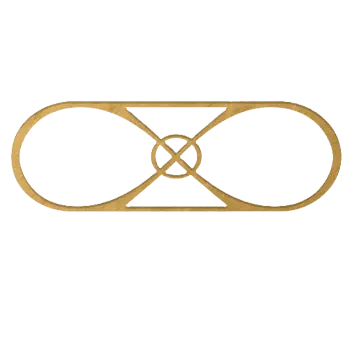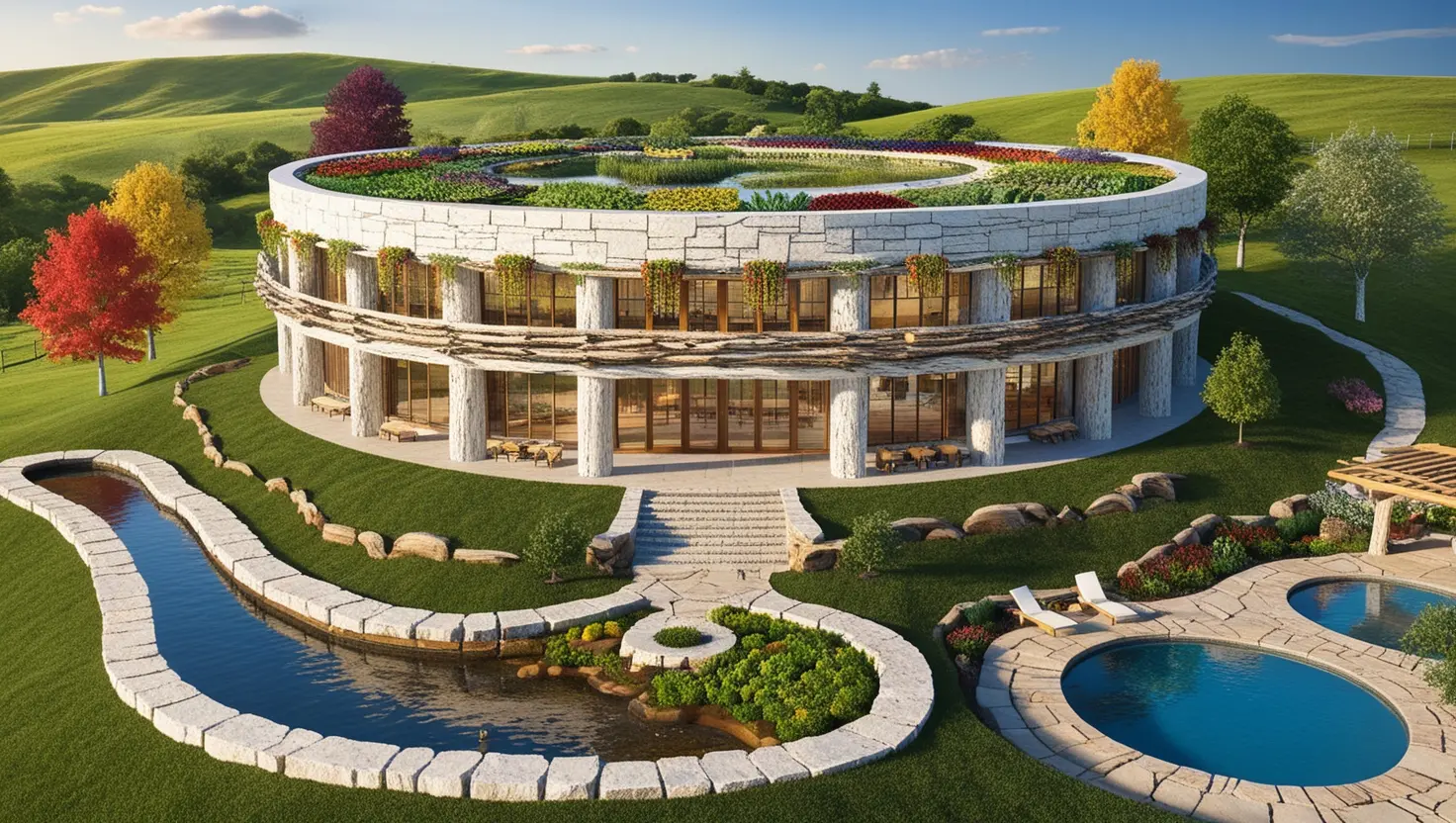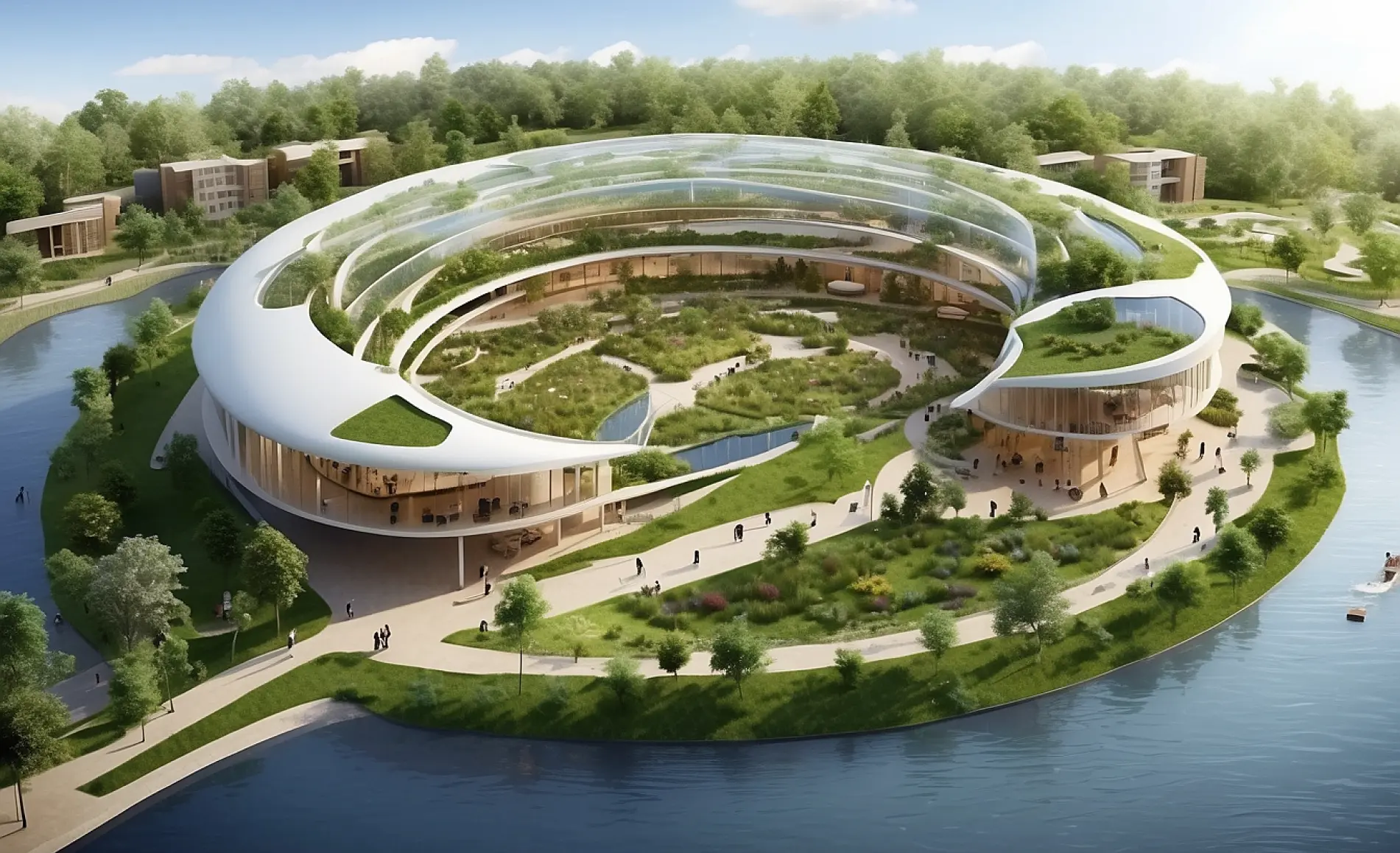We are Building a Regenerative Future, NOW
One of my greatest mentors, Buckminster Fuller often said, “You never change things by fighting the existing reality. To change something, build a new model that makes the existing model obsolete.”
Today, our forests are under siege from deforestation, largely for construction materials and conventional development practices. But the tide is finally turning as more and more people realize that we cannot replace our ancient forests. A wave of innovation in sustainable building materials is rewriting the rules of construction. With technologies like Air-Crete, ICCF (Insulating Composite Concrete Forms), and ICF (Insulating Concrete Forms), we can now build stronger, safer, and more regenerative structures, without cutting down trees ever again. The added bonus, our homes are healthier, stronger and better than ever.
This report explores the differences between these materials, their benefits, and why they are essential to creating a future where humanity thrives in harmony with Nature. In the other RegeniThrive reports in this series, I cover plant-based building materials and other brilliant options we now have worldwide.
Starting with the Basics: What is Air-Crete?
The word itself says it all. Air-Crete is a lightweight concrete infused with millions of microscopic air bubbles, created using a foaming agent. The result is a strong, insulating, fireproof, and mold-resistant building block that’s also cost-effective and super lightweight making it easy to build with.
- Eco-Friendly: Requires less cement (a major CO₂ emitter) because the air bubbles replace volume.
- Insulating: Naturally energy-efficient due to trapped air.
- Lightweight: Easier to handle, reducing labor and costs.
- Fire & Pest Resistant: Non-combustible and inhospitable to most insects.
Air-Crete is best suited for climates with wide temperature swings, as its thermal performance helps regulate interior comfort.
ICF Defined and Refined
Insulating Concrete Forms (ICF) are hollow foam blocks (typically expanded polystyrene/EPS) stacked like Lego bricks and filled with reinforced concrete.
- Strength: Incredibly durable, highly earthquake- and hurricane-resistant.
- Insulation: EPS foam layers provide high R-values.
- Main Drawback: Foam is derived from petroleum products and is not biodegradable, leaving a long-term environmental footprint.
ICF is popular in regions prone to extreme weather but raises concerns among regenerative builders due to reliance on virgin plastics rather than recycled materials.
What is the difference of ICCF?
Insulating Composite Concrete Forms (ICCF) take the ICF idea further but replace virgin EPS foam with recycled, mineralized wood or reclaimed plastics. Faswall®, for example, uses mineralized recycled wood pallets mixed with cement.
- Recycled Materials: Diverts waste streams, reducing landfill pressure.
- Non-Toxic: Safer than petroleum-based foams.
- Durability: Fire-, mold-, and pest-resistant.
- Sustainability: Uses 100% recycled or organic matter in some models.
ICCF aligns closely with regenerative values because it embodies circular economy principles; taking waste and turning it into durable, high-performance structures.
Comparing Air-Crete vs. ICF vs. ICCF
| Feature | Air-Crete | ICF (EPS-based) | ICCF (Composite forms) |
| Core Material | Cement + foaming agent | EPS foam + reinforced concrete | Mineralized recycled wood + concrete OR reclaimed plastics |
| Use of Recycled Materials | Limited (mostly cement) | None (virgin EPS plastics) | High (recycled wood/plastics) |
| Structural Strength | Moderate | Very high | Very high |
| Earthquake Resistance | Good (lightweight, flexible) | Excellent | Excellent |
| Fire Resistance | Excellent | Excellent | Excellent |
| Mold/Fungus Resistance | Excellent | Good | Excellent |
| Weather Resistance | Good (may need sealing in wet climates) | Excellent | Excellent |
| Thermal Insulation | High (air bubbles) | Very high | Very high |
| Climate Suitability | Moderate to arid, temperate | All climates (esp. extreme weather zones) | All climates |
| Cost Efficiency | Low-cost, easy for DIY | Mid-high cost | Mid cost, long-term savings |
| Environmental Impact | Reduced cement = lower CO₂ | High (virgin plastic, landfill waste) | Low (recycled materials, circular economy) |
| Best Use Cases | Affordable homes, DIY builds, eco-villages | High-performance, disaster-resistant homes | Regenerative communities, commercial & residential builds |
Why These Materials Make Wood Obsolete
Traditional wood framing has dominated construction, but it comes at a steep cost: deforestation, habitat destruction, and carbon emissions. The alternatives now available are stronger, longer-lasting, and far more regenerative.
- Air-Crete eliminates lumber issues and reduces cement use and available globally.
- ICCF creates durable blocks from recycled waste streams and a top choice for extreme climate areas.
- ICF provides resilience but still relies on petroleum, making it a bridge technology rather than a regenerative one.
By choosing these alternatives, we have eliminated the need for using live giving trees and are building safer, healthier, beautiful homes and communities.
Buckminster Fuller’s Wisdom Applied
Uncle Bucky’s words resonate now more than ever. Air-Crete, ICCF, and regenerative composites are not just “alternatives”—they are superior systems that make tree-cutting obsolete. By building communities with these materials, we create a new model of construction that is:
- Circular: Waste becomes resource.
- Resilient: Buildings resist fire, storms, mold, and pests.
- Efficient: Thermal performance cuts energy costs for generations.
- Healthy: Non-toxic, breathable, and wellness-oriented.
Real-World Applications
- Eco-Villages & Regenerative Communities: Air-Crete domes and ICCF homes are already being piloted in sustainable communities worldwide.
- Disaster Recovery: ICCF and ICF are increasingly used in hurricane- and earthquake-prone regions.
- Urban Development: ICCF blocks are ideal for urban commercial builds—strong, fireproof, and green-certified ready.
Building Regeneration, Not Destruction
The choice before us is clear: continue destroying forests for short-lived, toxic buildings—or embrace regenerative innovations that serve both humanity and the planet. With Air-Crete, ICCF, and advanced composites, we now have the materials to make wood-based building obsolete.
These solutions give us homes that:
- Last longer
- Cost less over time
- Protect families from disasters
- Save forests and ecosystems
The future of building is here. It is regenerative. And it is time to choose wisely.
Follow me on LinkedIn for more RegeniThrive Reports, or connect directly through the Consulting tab on my website if you’re ready to implement regenerative materials in your community or development project.
This article is part of my RegeniThrive Report series on regenerative building materials and the urgent need to save our trees and forests. There is so much more to discover beyond what you’ve just read, each report highlights innovative solutions that allow us to build homes and communities without harming Nature and focuses on different options in each article. I invite you to explore the full series by visiting my blog at annanaturalista.com/blog, where I post new RegeniThrive reports each week. And if you are a community developer or simply ready to build your home or office with these regenerative materials, reach out to me directly so we can discover the best sources and resources in your region of the world.
Together, we can co-create spaces that honor life while protecting our precious trees, the pillars of all life on our beloved planet.




















